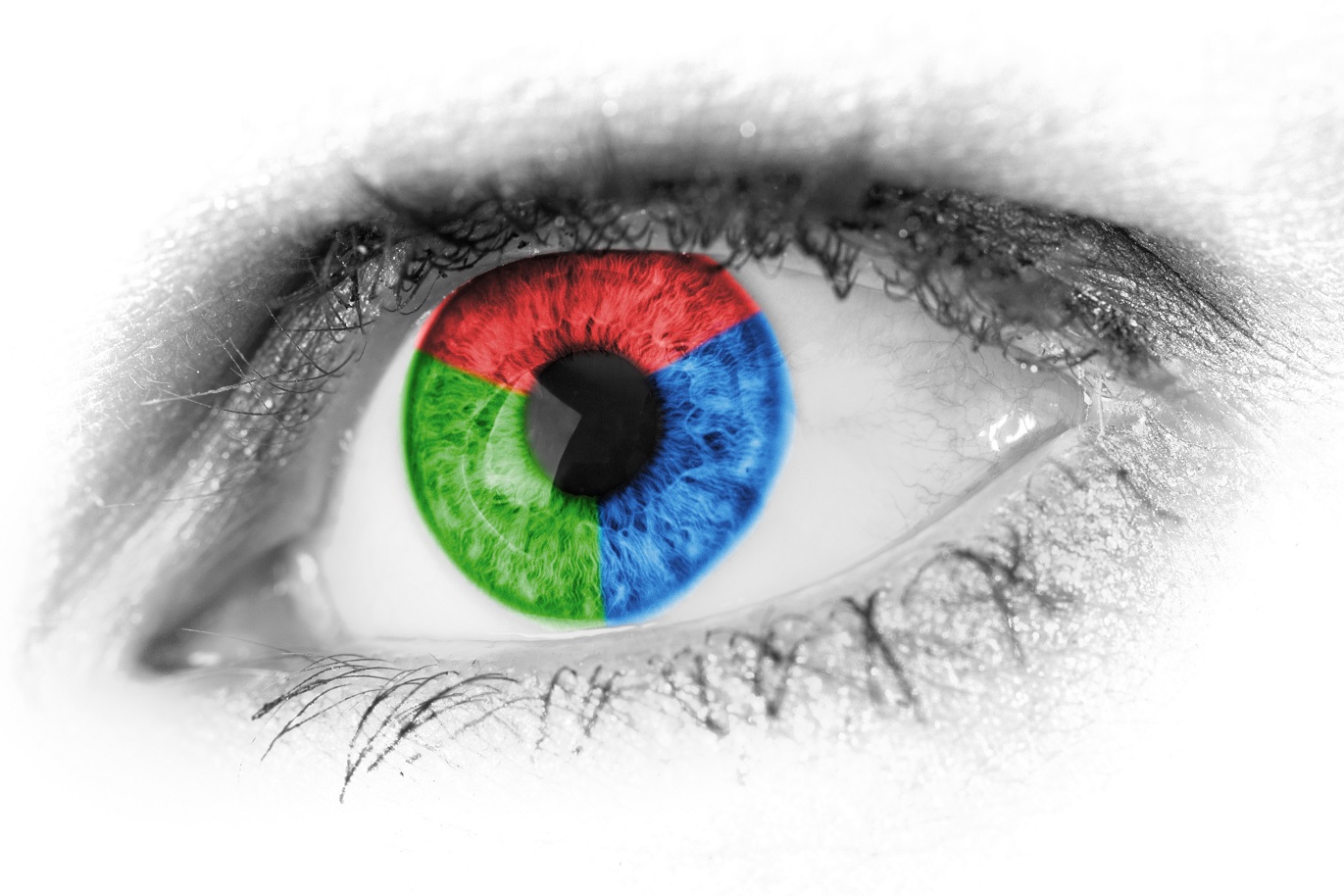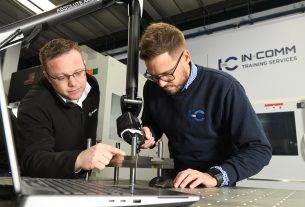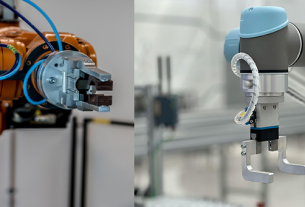Determination, measurement and detection of colours in industrial applications are complex measurement tasks. Compared to other physical quantities, it is difficult to define colour. Famous scholars such as Leonardo da Vinci and Isaac Newton have already tackled this question in the late Middle Ages. State-of-the-art colour measurement technology not only answers this question but also offers solutions for industrial applications, says Glenn Wedgbrow, Business Development Manager at Micro-Epsilon UK.
Colour is a great challenge for industrial measurement technology since it is an individual, visual sensation elicited by light. When measuring colours, everything is about comparing the measured colour with the actual colour perceived by the human eye. The crux of the matter in most applications is to detect very slight deviations in colour, as even these can be perceived by the human eye. Painted car parts, printing matter or facade panels are just some examples of the many products whose colour must be inspected during production.
Human colour perception
Colour inspection in industrial applications requires suitable sensor technology that corresponds to the colour perception of the human eye. The latter is invoked by light in the wavelength range of 380nm to 780nm. The human eye has different sensor cells: 120 million rods for light/dark differentiation and 6 million cones for colour perception.
There are three different types of cones, each of which is receptive to a different wavelength range of the visible spectrum. Rods are much more sensitive than cones, which is why colour vision depends on illumination. Based on human colour impression, colours can be described differently. As there are three different cone types, the colour space consists of three dimensions. Since 1931, the CIE 1931 standard colour space stipulated by an international commission has ensured comparability in colour descriptions. This colour space is based on a study that examines the colour impression of the test persons. At the same time, parameters such as observation conditions and illumination were stipulated in order to ensure comparability of the colour measurements. In technical applications, the CIELAB colour space is more common. It is generated from the standard colour space by transformation. The coordinates of this colour space are ‘L’ as a measure of the brightness, ‘a’ (green/red saturation) and ‘b’ (blue/yellow saturation). The advantage of this colour space is that each hue perceived as a separate colour by the human eye has the same volume. The HSV/HSI colour spaces are rarely used. The RGB and CMYK colour spaces used with monitors and printing technology are significantly smaller than the CIE standard colour space. This means they cannot image all colours that the human eye recognises and so are not suitable for precise, industrial colour measurement.
In addition to the colour spaces, other definitions are important. Therefore, regulations regarding lighting and observations distance were stipulated by the CIE commission. Another important parameter for industrial applications is the so-called colour distance, Delta-E, which is the distance between two colours in the colour space. Depending on the colour, the human perception is limited at 0.5 to 1. The automotive industry requires Delta-E < 0.1.
Metrological challenge
When the observation geometry is determined, colour is (in physical terms) a reflected intensity spectrum in the visible wavelength range. This reflection spectrum depends on the object colour and the illumination. Illumination is defined by different light sources, for example light bulbs, daylight, fluorescent lamps or cold white LEDs. A colour sensor detects the reflected spectrum and imitates the principle of the human eye. For measurements, the reflected light is refracted into its spectral parts. The easiest method is to use filters where only one part of the spectrum can pass through. Most conventional CCD cameras whose sensors are divided into green, red and blue pixels are also based on this technique.
A more accurate principle is used by colour sensors for industrial applications such as the new colorSENSOR CFO series from Micro-Epsilon. The specimen is illuminated by a light source, which in most cases is a white light LED. The light reflected by the probe hits the sensor where the light passes through different filters and eventually reaches a light-sensitive sensor element. The absorption spectra of the filters used should overlap. The filters divide the light into long-wave (X), medium-wave (Y) and short-wave (Z) parts. The individual signals are then transformed into L*a*b* colour values.
This is how measurement values are generated which enables the assignment of colours according to the colour perception of the human eye. Therefore, we refer to these as perceptive colour sensors or true colour sensors. They are ideal for recognition of colour deviations. A teach-in function enables the user to program the desired colour on the sensor and to determine the maximum permissible colour deviation. Next, the sensor compares the colour of the products during operation and can for example send a signal via a digital output if the colour of the specimen is within the tolerance limits.
Another functional principle is applied by colour measurement systems such as the colorCONTROL ACS7000 from Micro-Epsilon. This divides the spectrum of the incident light via refraction on a grid into 256 parts, which are imaged behind the grid onto a CCD sensor line. This is how the complete visible spectrum can be accurately measured with a spectral resolution of 5nm. The colour measurement system not only compares the colours to reference values, but also identifies and outputs these as coordinates in the colour space. As well as the sensor system, the white light LED is incorporated into the housing of the system, enabling different sensor heads to be connected via optical-fibre cables. In the ACS1 standard sensor for conventional measurement tasks, illumination and receiver are either arranged at an angle of 30°x: 0° or 45°x: 0°. This leads to observation distances of 50mm or 38mm respectively.
For more complex measurement tasks, for example, with structured, highly reflective or shiny metallic surfaces, the ACS2 circular sensor with 24 circular arranged lighting optics at a measuring angle of 45°c:0° is used. This ensures continuous, homogeneous lighting for measurements, regardless of the angular position of the target object. Even with smaller measurement objects or on curved surfaces, reliable colour measurements are possible. For colour measurements of transparent objects such as film or glass, the ACS3 transmission sensor is required where illumination and receiver are arranged at an angle of 180°:0° to each other. This receiver sensor also measures colours of self-luminous objects. No lighting unit is required.
Ease of use
Although ‘colour measurement’ is a complex issue, colour sensors and colour measurement systems from Micro-Epsilon are easy to use. Colour teaching is carried out using a teach-in button; LEDs on the colour sensor or the measurement system signify the mode of operation. In most cases, configuration is performed via an integrated web server. Settings such as illumination and measurement frequency for perfect colour recognition and measurements can be set up easily. The output signals are also set up directly using the web interface.
In order to ensure high quality standards, measurement of colour is an invaluable technique in numerous industrial applications. A typical example is the automotive industry: most bumpers, door handles and exterior mirrors are painted the same colour as the car chassis. Furthermore, distance sensors and headlight cleaning systems are integrated in the bumpers. These components are painted separately but must precisely match the colour of the body. During the assembly process, the measurement system verifies if these colours are identical because the human eye recognises even the smallest of deviations. Also, in the passenger compartment, the colours must be correct. Here, structured, curved and reflecting surfaces are additional challenges for colour measurement technology. Another example is in the production of facade panels made from zinc whose surface colour can change after being coated. During production, the colour must be inspected continuously in order to ensure early recognition of any deviations. Otherwise, facade panels with slightly deviating colours would stand out, particularly in large facade areas. In tablet production, the slightest colour deviations must be detected. In transparent blister packs, different colour shades would give a poor impression.
For the above examples and in many other applications, Micro-Epsilon offers the optimum solution in terms of perceptive colour sensors and colour measurement systems. Depending on the requirements, the user can also solve difficult colour measurement tasks. The products for colour recognition and measurement enable very small Delta-E values, high measurement frequencies and inline (in-process) measurements. The user benefits from a measurement system that easily integrates into their industrial control systems and simple configuration and handling via the integrated web server.
For more information, please call the Micro-Epsilon sales department on +44 (0)151 355 6070 or email info@micro-epsilon.co.uk




